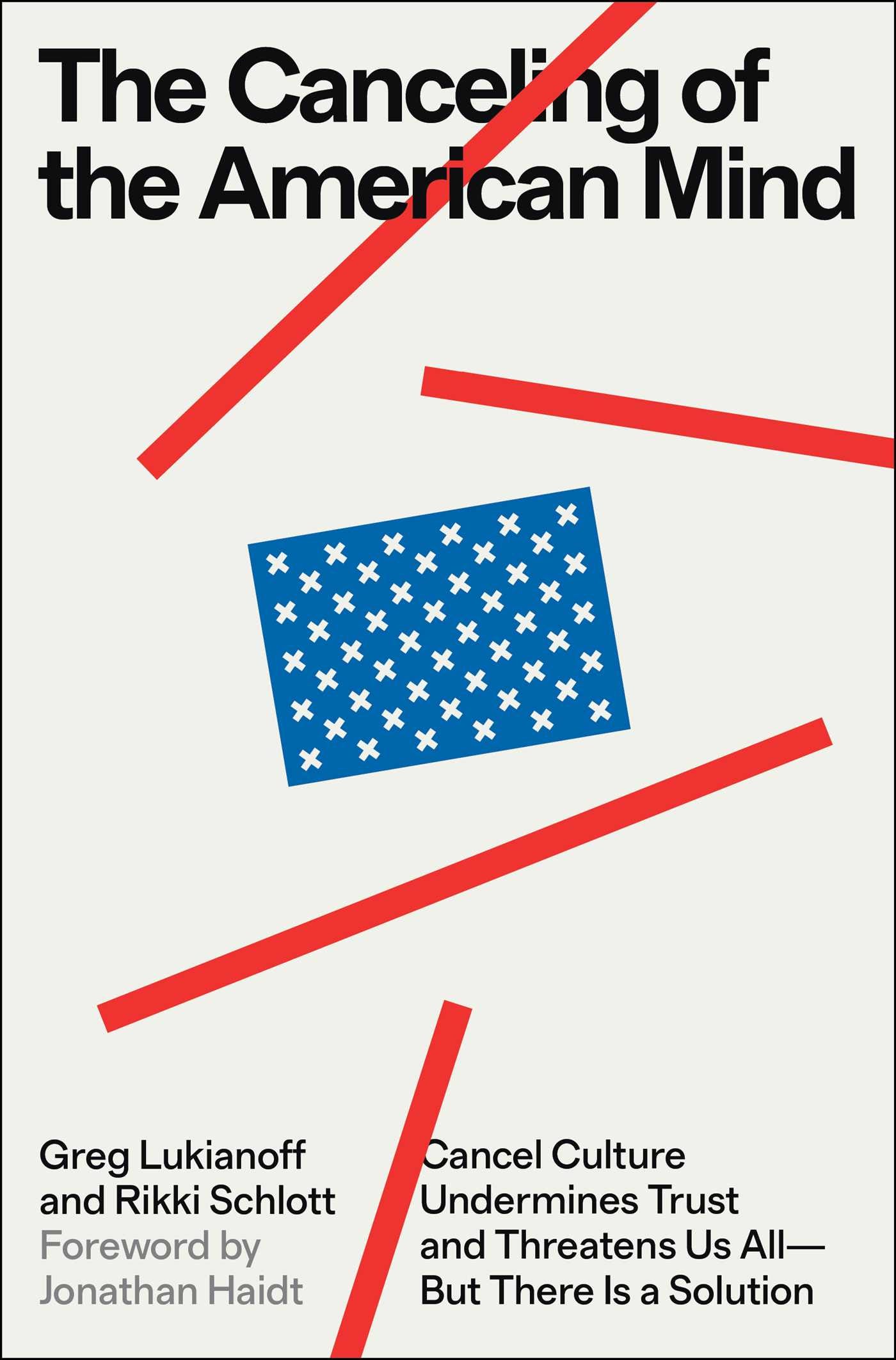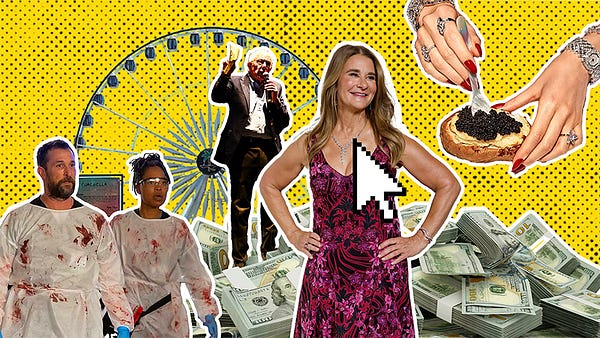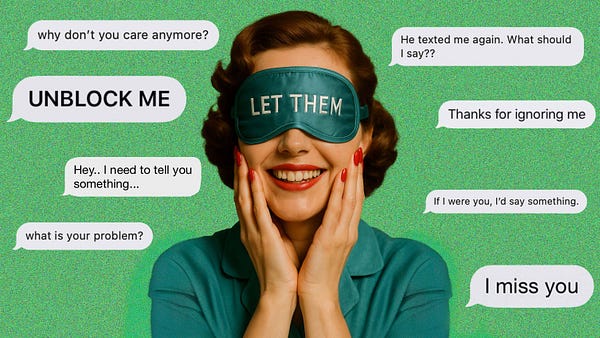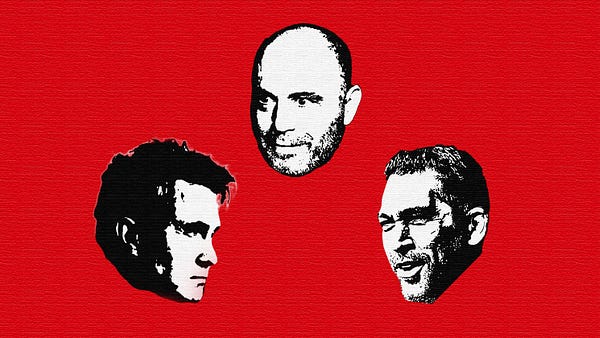
The Free Press

Over the past few years, people have been targeted in real life and on social media for having “incorrect” views, and some have even been fired from their jobs for “wrongthink.” While many Americans define this as “cancel culture,” many on the left deny its very existence, insisting it’s a right-wing fantasy. Now, a new book, The Canceling of the American Mind, shows how this phenomenon has captured our institutions in the twenty-first century. Here, in an edited excerpt from the book, authors Greg Lukianoff and Rikki Schlott trace how cancel culture grew out of U.S. campuses in the ’60s until finally infiltrating nearly every aspect of American life. . .
The First Amendment wasn’t created to protect the interests of the rich and powerful. After all, the moneyed and influential have historically been protected by their wealth and power. And the United States didn’t need a special right to protect the will of a majority—that’s what democratic votes are for.
In the end, the First Amendment is primarily needed to protect minority views, unpopular opinions, and the expression of those who clash with the ruling elite.
But on campus today, you’re likely to hear this argument turned entirely on its head—as if championing free speech is somehow doing the bidding of the powerful. But that’s only because academia doesn’t like to admit that it actually is extremely wealthy and influential itself, or that those who defend the status quo are defending an extraordinarily powerful American industry.
Just for some perspective, the market size of the U.S. higher education industry is just over $1 trillion. That’s more than three times larger than the U.S. food and beverage industry and over two times the size of the U.S. electricity industry. For more context, Canada’s GDP in 2021 was $1.9 trillion, Mexico’s $1.3 trillion, and the global pharmaceuticals industry rang in around $1.4 trillion in that same year.
Meanwhile, the collective endowment of U.S. public and private nonprofit universities—which represents just one element of their total assets—sits at $932 billion, according to their 2021 reports. That’s nearly as much as all of Apple’s, Microsoft’s, and Amazon’s total assets. (Plus, you can add in higher education’s $711 billion in tangible assets.)
From a purely financial perspective, the higher education apparatus is among the wealthiest and most influential institutions in the world. But you wouldn’t know that from the way many in academia try to position themselves. Colleges and universities are far from the humble academic hubs they claim to be, but many in higher education have a hard time admitting it’s been a long while since they were the underdogs.
Academia’s free speech skepticism is part of a long history of powerful people undercutting the First Amendment. Given that elites seldom like limitations on their power (and particularly on their power to censor), it shouldn’t come as a surprise that the First Amendment was limited by judges and politicians from the very moment of its inception.
Although it was adopted in 1791, the First Amendment had very little actual legal force until 1925. The 1930s and ’40s ushered in greater speech protections as the Supreme Court recognized freedoms of symbolic protest, petition, and freedom from state-compelled speech.
And, although the fifties brought McCarthyism, by the end of the decade freedom of speech enjoyed greater legal protection and cultural appreciation by the American people than ever before. From the late fifties through the sixties and into the seventies, historic victories for the civil rights, gay rights, and women’s rights movements were all possible thanks in part to a robust interpretation of the First Amendment. In the words of civil rights icon John Lewis: “Without freedom of speech, the civil rights movement would’ve been a bird without wings.”
But the stunning successes of these liberal social movements was not enough for one of the best-known philosophers in the world: Herbert Marcuse. Born in Germany, Marcuse fled in 1934 as the Nazis came to power, immigrating to the United States to teach first at Brandeis University and then the University of California at San Diego.
Just as freedom of speech seemed poised to triumph as the vision of the left, Marcuse published his influential 1965 essay “Repressive Tolerance.” He argued that tolerance for speech is only useful in a totally equal society—and that getting to that point paradoxically requires intolerance and suppression of certain viewpoints. In fact, Marcuse flat-out argued that there should not be free speech for right-wingers.
It’s easy to assume that Herbert Marcuse’s influence on campus censorship is exaggerated. But the Marxist Marcuse really was celebrated as the “guru of the new left.”
His school of thought proved transformative to how campuses think to this day. “Repressive Tolerance” contained multiple intellectual threads that led campuses to become less tolerant—and ultimately enabled academia to justify its embrace of cancel culture over freedom of speech. Thanks to Marcuse’s scholarship, those on the illiberal left could justify using any tools necessary to shut down their opponents and serve their political ends.
By the sixties, the campus ratio of liberals to conservatives among social scientists was roughly three to one, so protecting minority points of view would mean defending opinions Marcuse and his cohort considered regressive and illegitimate. Rather than accept the fact that the left were locally powerful in higher education, Marcusian academics preferred to argue that they were merely enlightened outliers in a larger conservative American society where they were perpetually underdogs.
In “Repressive Tolerance,” Marcuse argued that “the massive scale of the conservative majority” posed such an extraordinary threat to society that the only choice left was to rejigger the ideals of tolerance, free speech, and power in order to combat them. He argued the left needed to practice “intolerance in the opposite direction, that is, toward the self-styled conservatives, to the political Right.”
In short, Marcusians were proponents of extending freedom of speech to progressives, while fighting “regressive” conservatives with intolerance, censorship, indoctrination, and even violence. The unwritten rule on campuses became that if you can label an idea as conservative, you are no longer obligated to take it seriously. Of course, not everyone on campuses uses this tactic to tune out their opponents, but it’s extremely pervasive—and perhaps the single most effective tactic for “winning” arguments without actually winning arguments on campus.
Less than a decade after the student-led campus Free Speech Movement’s start in Berkeley in 1964, the Supreme Court recognized that students at state colleges enjoyed powerful First Amendment protections in Papish v. Board of Curators of the University of Missouri, 1973. Few social movements proved so successful so quickly as the Free Speech Movement did.
But thanks to Marcuse and his followers, the Free Speech Movement’s reign in academia started to erode. Already by 1980, campus expression was being chipped away from within. Just ten years after the legal triumphs of the Free Speech Movement in the country’s preeminent court, campuses across the country—from the University of Connecticut to the University of Michigan to Stanford Law School—were passing speech codes. That’s when the eventual founders of the school of Critical Theory began proposing “enlightened” limitations on free speech to ban what they considered hateful, racist, and sexist speech.
This was the beginning of a decades-long campaign to turn campuses, students, and the left in general against their long-held support for broad freedom of speech.
Whereas once freedom of speech was correctly understood as the necessary tool of the powerless against the powerful, very powerful institutions now argue that it’s the weapon of the powerful against the powerless. This is a weird inversion only possible in an environment as insular as American higher education.
From U.S. Colleges into American Culture
For decades, free speech advocates had warned that American higher education was headed for disaster—that colleges and universities were straying from their core mission of pursuing truth wherever it led through freedom of speech and the scientific method. They warned that a crisis lay ahead.
That crisis happened almost 15 years into the twenty-first century, in an era powered by social media.
In 2010, free speech organization FIRE saw 19 attempts to get professors punished. But then came an explosion. From 2014 to mid-2023, we know of more than 1,000 attempts to get professors fired, punished, or otherwise silenced. About two thirds of these attempts are successful, resulting in consequences from investigation to termination. But even unsuccessful attempts matter, because they are more than sufficient in chilling speech.
This many professors getting fired is truly unprecedented. It’s occurring on a scale that hasn’t been seen since the Supreme Court first established First Amendment protections of academic freedom and campus speech. In fact, we’d have to go all the way back to the 1950s to see anything even remotely on this scale.
To give a sense of proportion, only three professors were fired or forced out of schools over something they said in the post-9/11 panic. The modern era of cancel culture (2014 to present), by contrast, has resulted in almost 200 professor terminations. That exceeds even the standard estimate of 100 professors terminated in the second Red Scare (1947 to 1957).
To gauge a better sense of the actual scale, FIRE surveyed college faculty and found that 16 percent of professors said they have either been disciplined or threatened with discipline for their speech, teaching, or academic research. Seven percent even said they have actually been investigated. And a whopping 29 percent said they’ve been pressured by administrators to avoid controversial research.
It’s especially alarming that cancel culture is concentrated in the most influential universities in the country. The top 10 of U.S News & World Report’s top-ranked colleges account for more than 10 percent of all cancellation attempts. The top 100 account for more than 40 percent. At the top 10 colleges, less than a quarter of cancellation attempts are launched by conservatives. In the rest of academia, conservative cancel culture accounts for as much as 40 percent of all incidents and about a third of sanctions.
Although it did not yet have a name, cancel culture exploded into American life toward the end of 2013, hit its stride around 2015, and then really accelerated in 2017. Jenny Jarvie was one of the first to write about it in her 2014 article on trigger warnings for the New Republic, “Trigger Happy.” She was followed by Jonathan Chait's New York magazine piece, “Not a Very P.C. Thing to Say,” and Jon Ronson’s book, So You’ve Been Publicly Shamed, in 2015.
By May and July of 2020, after the death of George Floyd at the hands of a white police officer led to an explosion of protests across the country, Google searches for the term cancel culture grew by a factor of twelve.
Today, cancel culture is a term the vast majority of Americans are familiar with—and concerned about.
According to a survey by free speech organization FIRE, where author Greg Lukianoff currently serves as president, 73 percent of the American public recognizes the term cancel culture. FIRE’s poll also revealed Americans overwhelmingly value freedom of speech over all other surveyed freedoms—including the right to vote, the right to bear arms, and freedom of religion. And 83 percent agree democracy can only thrive if free speech remains vital.
Furthermore, 84 percent of Americans believe that it is a problem that some Americans do not speak freely in everyday situations due to fear of retaliation or harsh criticism. And a 2020 poll found 62 percent of American adults—including a majority of Democrats, independents, and Republicans alike—did not feel comfortable expressing their opinions in public. Thirty-two percent worried they could miss out on job opportunities or get fired if their political views became known. Similar results have been found in multiple polls.
That summer, some formidable cultural figures stood up to this purge of wrongthink—perhaps most notably the 153 signatories of “A Letter on Justice and Open Debate” published by Harper’s Magazine on July 7 and penned by Thomas Chatterton Williams and others. Among the names listed were thought leaders like Margaret Atwood, Steven Pinker, Noam Chomsky, Cornel West, Malcolm Gladwell, and Salman Rushdie.
Lamenting “a vogue for public shaming and ostracism,” the letter took a strong stand against mounting illiberalism:
The democratic inclusion we want can be achieved only if we speak out against the intolerant climate that has set in on all sides. The free exchange of information and ideas, the lifeblood of a liberal society, is daily becoming more constricted. . . . We refuse any false choice between justice and freedom, which cannot exist without each other.
This was far from some right-wing think piece. The signers included many famous lefties. And the letter itself described the fallout following George Floyd’s murder as a “needed reckoning” and dubbed then-President Donald Trump “a real threat to democracy.” Influential people on the left were calling out cancel culture in force.
But any hopes this might be an impetus for change were quickly dashed.
Soon, the critiques came rolling in. Laura Bradley of The Daily Beast dismissed the signatories as “assorted rich fools,” while Richard Kim of The Huffington Post dubbed the letter’s contents “fatuous, self-important drivel.” Joel D. Anderson of Slate took to Twitter to ask his followers the question: “In a world with real problems, who even knows what this is actually about?”
Just three days later, a counter-letter titled “A More Specific Letter on Justice and Open Debate” was published online with 150 signatures of its own, including anonymous journalists from the likes of NPR, The New York Times, and Politico. They decried the Harper’s Letter as a defense of the “intellectual freedom of cis white intellectuals,” which they argued “has never been under threat en masse.”
In the face of backlash, historian and Tufts University professor Kerri Greenidge even asked for her name to be removed from the original letter and tweeted, “I do not endorse this @harpers letter,” before adding her name to the counter-letter.
The Gaslighting of the American Mind
A similar pattern happened on March 18, 2022, when The New York Times published a free speech editorial, arguing that cancel culture had pervaded many parts of American life. It stated: “On college campuses and in many workplaces, speech that others find harmful or offensive can result not only in online shaming but also in the loss of livelihood.”
The piece pointed a finger at both the right and left for perpetuating a culture of ideological intolerance. It called out liberals who’d lost touch with the “once liberal ideal” of a “full-throated defense of free speech” as well as Republican lawmakers determined to “gag discussion of certain topics” with bills preventing the mention of divisive issues in classrooms.
“People should be able to put forward viewpoints, ask questions and make mistakes and take unpopular but good-faith positions on issues that society is still working through—all without fearing cancellation,” the Times editorial argued.
The article didn’t hinge on assumptions about public sentiment. It was rooted in data from a national poll the Times had commissioned in partnership with Siena College to get to the bottom of what Americans really think about cancel culture. The results pointed to the fact that everyday Americans are not only noticing mounting illiberalism but are also deeply concerned about its ramifications. The Times editorial was making a modest, well-supported point that hardly merited the stunning explosion of rage in the Twitterverse and in elite circles.
And yet, those voicing their concerns about cancel culture were contemptuously rebuked by a powerful minority arguing that cancel culture does not, in fact, exist.
Former MSNBC commentator Keith Olbermann declared, “The @nytimes editorial board has lost the plot.”
“If I still worked at the New York Times, I would seriously think about quitting today,” the New Yorker contributor Adam Davidson tweeted.
“The New York Times editorial board should retract and resign,” wrote Dan Froomkin of Press Watch.
Journalism professor Jeff Jarvis called it “appalling white victimhood, naked to behold.”
This meltdown was merely one of two cancel culture controversies the Times found itself embroiled in that month alone. On March 7, 2022, social media similarly exploded in outrage when Emma Camp, a political liberal and former intern at FIRE, penned a guest essay, which she titled “I Came to College Eager to Debate. I Found Self-Censorship Instead.”
The University of Virginia senior described the “hushed voices and anxious looks” she observed when controversial topics were discussed on campus. “My college experience has been defined by strict ideological conformity,” she wrote in what should have been a relatively uncontroversial piece. “When criticism transforms into a public shaming, it stifles learning.”
Almost immediately, Twitter unleashed its wrath on Emma, ironically proving her point in the process. She was accused of condoning eugenics and being a hypocritical, fragile, disingenuous racist who was running interference for bigots. . . all because she argued that campuses can be an ideological monoculture.
But, most commonly of all, Camp was called a right-winger. It ended up being one of the most transparent examples of the mob deciding that if they could label someone a conservative, they simply didn’t have to think about her anymore. We know Emma Camp, and she is not conservative. But even if she were, why should that label magically discredit her argument?
The two New York Times controversies proved that even just acknowledging the existence of cancel culture is itself grounds for cancellation.
From The Canceling of the American Mind: Cancel Culture Undermines Trust and Threatens Us All—But There Is a Solution, by Greg Lukianoff and Rikki Schlott. Copyright © 2023 by Greg Lukianoff and Rikki Schlott. Reprinted by permission of Simon & Schuster, LLC. Follow Greg on Twitter (now X) @glukianoff and Rikki on @RIKKISCHLOTT.
Become a Free Press subscriber today:
















Thank goodness for FIRE. It's filling the gap abdicated by the ACLU which seems to love hate-speech codes and can't spend enough energy on making sure kids have a right to get that trans surgery! Hey, medical experiments on children in the name of gender ideology--what's wrong with that!? Anyway, to me the existence of FIRE and the rise of outlets like the Free Press give me modest hope that the flame free speech and expression may yet rekindle a true fire....
The most glaring and frightening example, 51 former "intelligence" officials signing a letter saying the hunter biden laptop was Russian propaganda. And then to have Leon Panetta defend the letter after it was proven false was a slap in the face to personal integrity. I guess the left has no integrity left in anyone who can even verify a public truth. Remember when you vote, D stands for duplicitous.